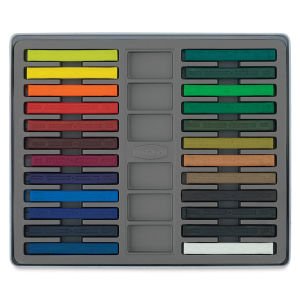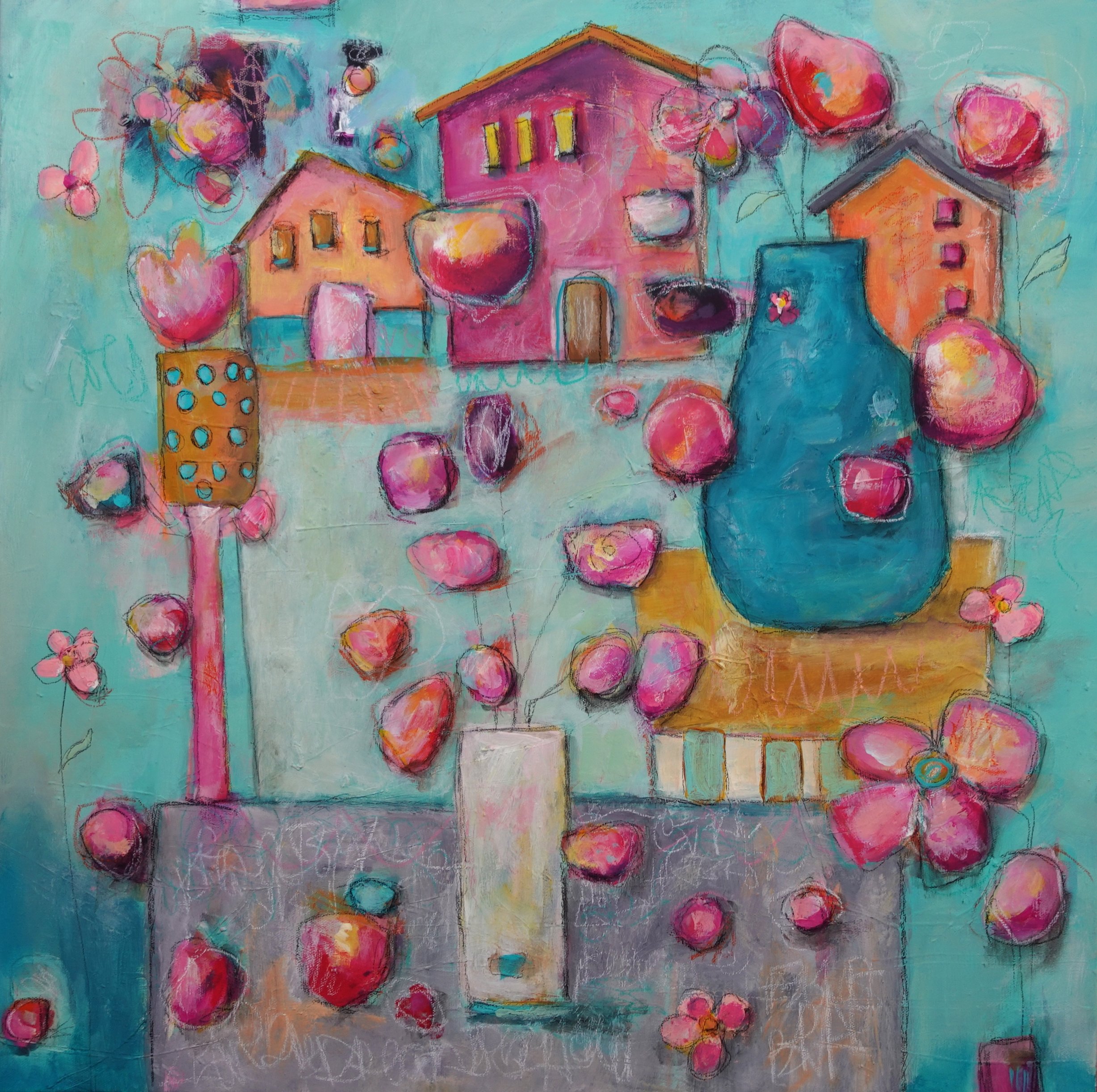2022-Making Marks and Taking Names
“Making Marks on Acrylic Paintings”
One of the top questions I receive is how I make the lines and the marks that I achieve in my work. The answer is that I like to experiment with a variety of tools that can achieve unique marks and often mix up the ‘recipe’ for each piece.
In a lot of ways, it’s like cooking, sometimes it’s more of this and less of that, or heck, let’s use everything in the refrigerator and see what works.
The idea is to try things out without fear of messing up and just have fun. You may even have a few of these tools in your artistic arsenal already. Pull them out and try them the next time you are in the studio!
It's been a while since I shared one of my favorite supply lists so since we are talking about mark-making, here are some of my favorites (plus an extra tool you might need if you use some of these items on your work).
**NOTE-links provided are part of an associated affiliate program. Purchases made from these links can result in a small commission from our partners at no cost to you.
10. Matte Varnish (to fix these water-soluble tools).
Read on to hear more about must-have art goodies!
Silicone Spatchers are fairly new in my bag of tools. Similar to the silicone wedge I mention in this list, these tools can mix paint, glaze on paint, make straight edges, and can create interesting gestural marks. I like the variety of sizes in this set and the price is right compared to buying each one separately.
2. Catalyst Wedge #6 is my favorite of this group of silicone tools. I like this style mostly due to its flexible nature and ability to move paint around my canvas with ease. These are easy to clean and last a very long time. Mix your paint on your palette with these and then add to your painting to express yourself in your own way. *Also works well with Cold Wax and Oil Paint.
3. Stabilo Woodies have been in my drawing toolbox for a long time and I just really haven’t used them much until I made a commitment this year to use what I have or get rid of it. I can’t believe it’s taken me this long to play with these fun, child-like big soft colored pencils. Create linework with thick color and with ease over dry acrylic paint or on your first layers. Once you use them, you will be hooked!
4. A long-time favorite and much-loved drawing tool, the Caran Dache Neocolor II crayons have a rich buttery feel to them, not too soft, not too hard, but just the right consistency! Scribble, color in, and even paint with these yummy crayons. Yes, they might smear when you paint over them, but I’ve found that if you are gentle with your strokes, the marks will stay in place and add lush depth of linework under glazes. Or, use them overtop of dried acrylic paint for fun scribbly marks and linework.
5. More ways to add color to your work, using the Inktense Pencils glide over acrylic paint to give a hint of color that turns to ink if you add water to it, or simply delicate lines that can add a sense of intricacy and mystery to your pieces. I find myself always using the colors of bark, ink black, indigo, and any orange. But of course, I have much more than those because, well, why not?!
6. As many of you know, one of my favorite pencils is one that comes from Jerry’s Artarama-the Jumbo Jet Black Pencil. However, it’s not available everywhere so I have been searching for a pencil that is very similar but more widely accessible. It was right under my nose the whole time. This ‘grease pencil works on a variety of surfaces, dried acrylic paint, among them. If you are looking for black sketchy lines that stay in place for the most part-look no further. While they come in white and black, I tend to use black most often.
7. Another perennial favorite, the Fineline Applicators are my go-to for delicate line work using acrylic paint. From scribbly to straight lines, shapes, outlines, asemic writing, to playful dots or sketchy lines, this tool does it all. I generally fill my bottles with fluid acrylic paint, but you can also use Golden’s high flow paint, a mixture of both, or for really drippy marks, acrylic ink. Most often I use the .20 gauge which is the blue bottle because I like finer lines, but try them both and see what you think!
8. More than just a pastel block, the Inktense blocks are vibrant blocks of dried ink that act like chalk pastel but can create vibrant areas of sheer color quickly with the addition of water. You can even use them like a watercolor in block form for quick shading or coloring on both your paintings and journal work. I like to color in a big swatch and then mist it with water to create runny lines. Try making your own colors by breaking up small pieces of the blocks and mixing them with water or a glazing medium!
9. Portfolio oil pastels are oldies but goodies. I first found these at an office supply store of all things and used them regularly in my journal to add creamy color or to create quick studies. I still use them in that way but also will use the pastels to draw creamy, colorful lines over the top of my paintings/mixed media work. Expensive oil pastels will have more vibrant colors of course, but the Portfolio brand is affordable and do the trick, especially for beginner or intermediate artists.
10. You might be thinking to yourself, yes..these are all great tools but how do you ‘set’ these over top of your work to make them permanent and less likely to smear? The answer is two-fold. I often wait until near the end of my work to add details that really smear, or add a fixative in-between stages. Workable fixative is fine, but I like to use the Winsor Newton Varnish over top of my paintings or a tiny bit to protect areas if I’m in between steps. If you like a brush on varnish look for your work and use these water-soluble products, you need to set the drawing mediums with an aerosol varnish first. There’s just no other way around it. Follow the manufacturer’s directions and utilize outdoors and protect yourself from the fumes.
That’s a wrap for now! I could probably add an additional 10 or 15 more of my favorite mark-making tools but let’s save that for another day! I appreciate you following along and checking out this fun painting supply list. If you are interested in any of my online classes or workshops in person, be sure to check out what’s available currently by going here for the e-courses and here for the in-person workshops.
Hope to see you soon in either one!
Cheers,
Jodi Ohl












